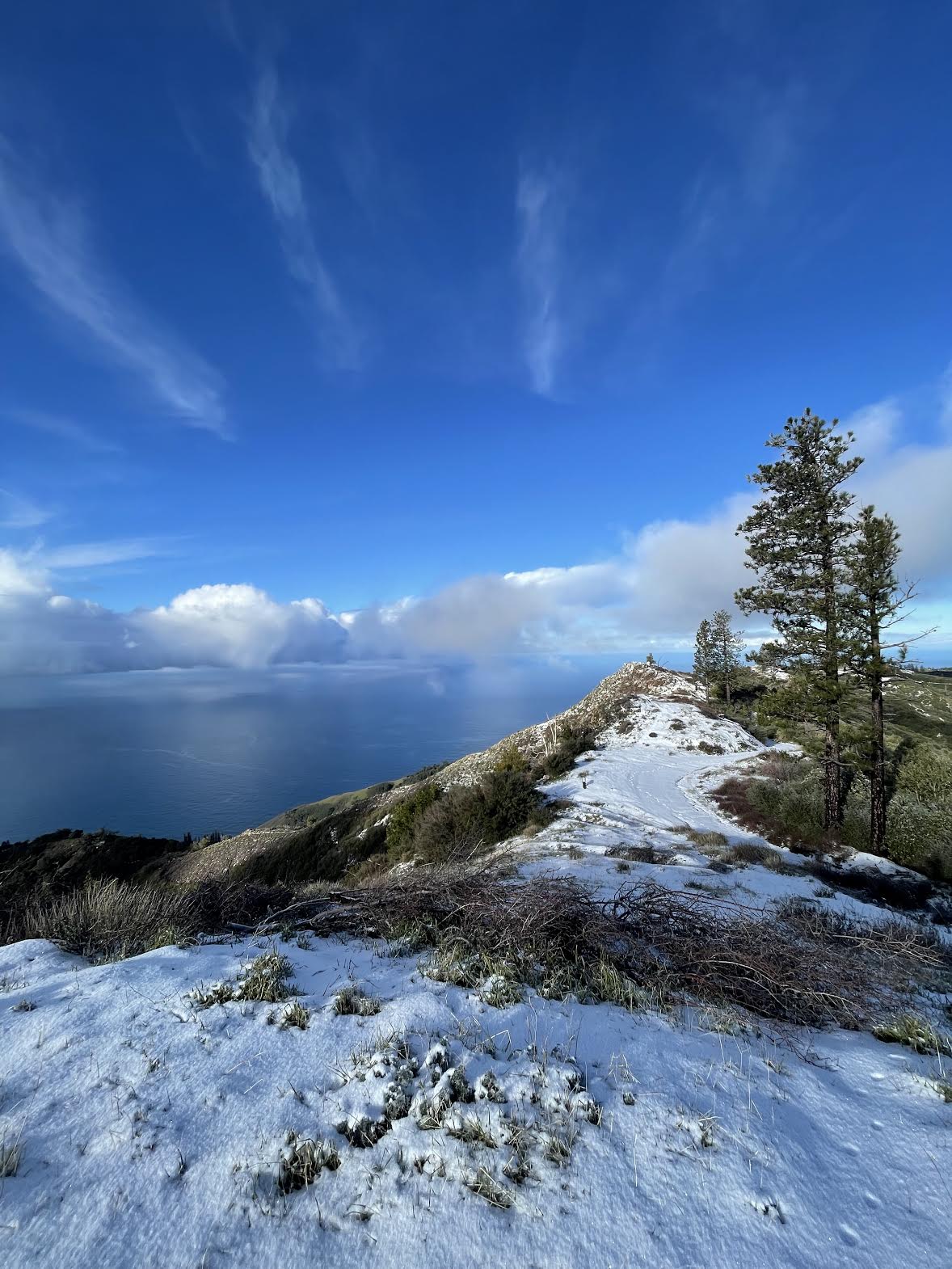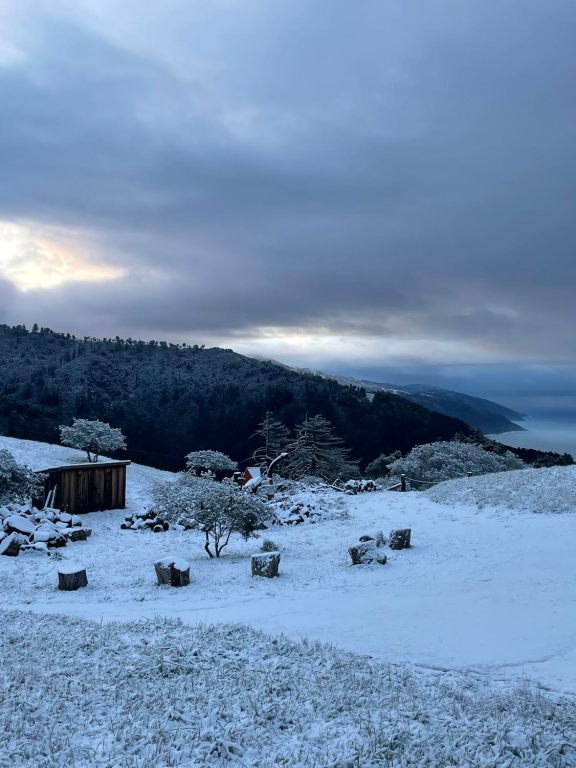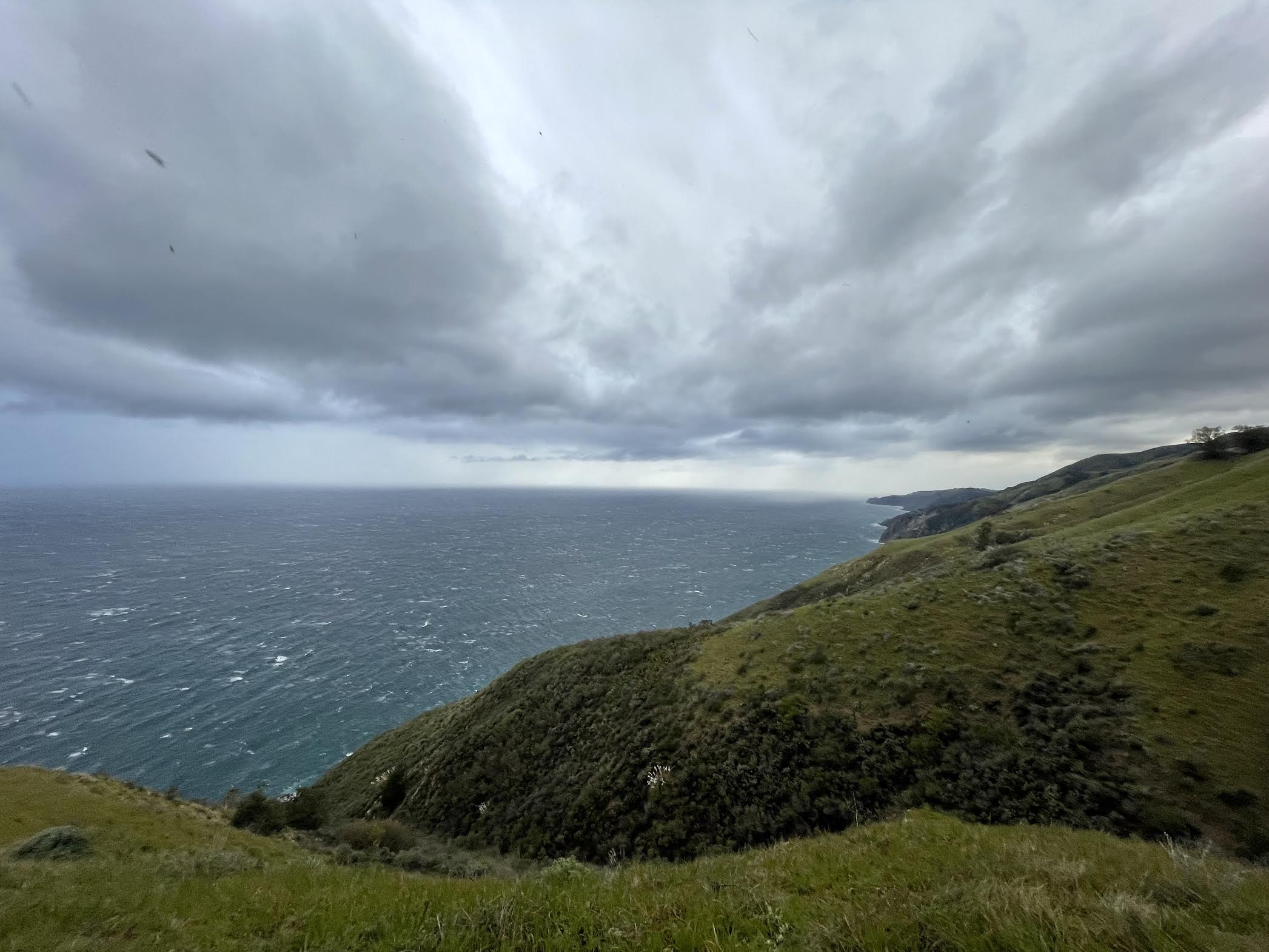Big Sur in the Snow
An Intense Winter Where Land Tilts to the Sea

From my front deck, dirt, shale, and granite descend to the ocean at an average gradient of 40 percent. Big Sur is the steepest place in North America where the land meets the sea. My home sits at an elevation of 1,400 feet, and the shoreline is still so close that in the morning I can hear the seals barking from guano rock. Alluvial sediment covers blocks of shale and granite — basic dirt, and, right now, basic mud.
Fifty-mile-per-hour winds are smashing rain into my windows as I write this. Outside, the oak, pine, and eucalyptus trees are swaying wildly. In the canyon, the redwoods crowding the slopes above the seasonal creek remain stately, but the creek itself isn’t stately at all — boulders are smashing and grinding downward, carried by the rushing water and filling the canyon walls with a steady roar. At the mouth, the ocean is huge and gray.
By day’s end, we will have received 12 inches of rain in 18 hours. To the south of me, three slides have made Highway 1 impassable; it won’t reopen for two years at least. To the north, the highway is also closed by a slide, though I am only temporarily marooned. Other friends in Big Sur aren’t so lucky and will have to be supplied by helicopter for some time.
“It’s the most intense winter here in my lifetime,” says Kate, my neighbor up the road. Kate moved here in 1954, when she was one-month old. In 1983, with a young child, she and other residents of my road were cut off by slides for more than two months. In total, nearly 100 inches of rain fell that year.
Since December, the ridge above us and just to the south has collected nearly 120 inches of rain. “It’s the relentlessness of it,” Kate says. In 1983, the winter began in October. Now, winter begins later. “We had a lot of big storms that year, but they were spaced out — they would let up in between,” Kate says.

It’s not just the rain that makes this year stand out; it’s the cold — the coldest Kate can remember. A few weeks ago, I woke up to snow falling outside my windows. In the pre-dawn darkness, I walked up the road, past Kate’s, and then to the trail that ascends to the top of Big Sur. It was a windless morning, and in the muffled stillness of the softly falling snow, I watched bobcat footprints appear in front of me and then, later, when I got to the top, cougar footprints.
The snowpack lasted for three weeks. It’s gone now, with the rain. This has been a big winter for Big Sur, and for the state as a whole. In the future, there will be bigger winters. Climate modeling suggests that in coming decades, a one-month-long atmospheric river could hit California. The estimated damage of such a climatological event is around $1 trillion.
Highway 1 was built in the 1920s and ‘30s. Throughout its time here, it has been subject to slides and slide-compounding wildfire. The highway has always been rebuilt. A 45-day atmospheric river will reshape the coastline. With Sacramento underwater, will it make sense to rebuild Highway 1? Will there be money for it? Will it be possible?
Civilizations, villages, habitations — throughout time, they have materialized and been abandoned, subject to changing climate. During the last ice age, between the Channel Islands and Santa Barbara, there was a six-mile channel. Rivaled at the time only by the Polynesians, the Chumash made the world’s best ocean-going canoes, and they populated the islands, paddling back and forth between them and the mainland. For thousands of years, a bonfire was kept alight on Santa Cruz Island, to guide paddlers by night.
When the ice melted, the channel filled — it’s now 26 miles wide. Too far for paddling. If in my lifetime parts of Big Sur becomes places we remember but no longer inhabit or visit, I’ll be glad for the memories. It’s a good place to live, and a good place to visit. It’s going to be a beautiful spring and summer here and everywhere else in the state, and when it’s beautiful in California, it’s hard to not laugh and enjoy yourself, which is what we will do and are doing now. Wild weather calls to mind Nina Simone: “We’re creatures of the wind, and wild is the wind, so wild is the wind.” Smashing wind and rain outside my walls, exuberance within.





You must be logged in to post a comment.